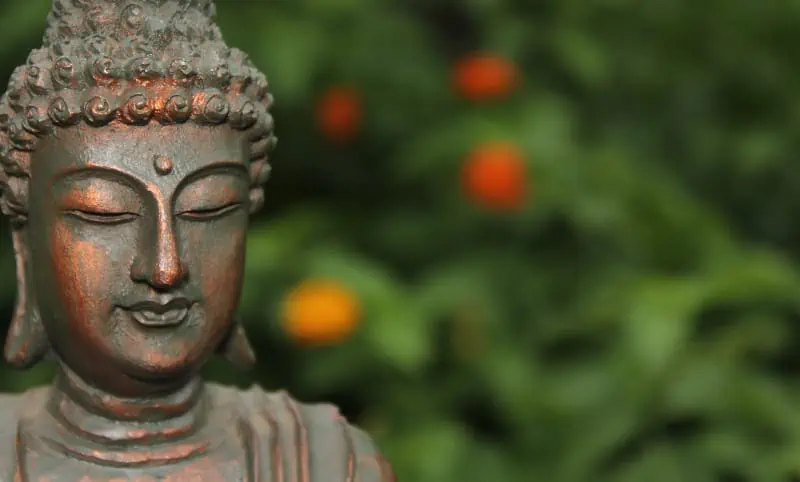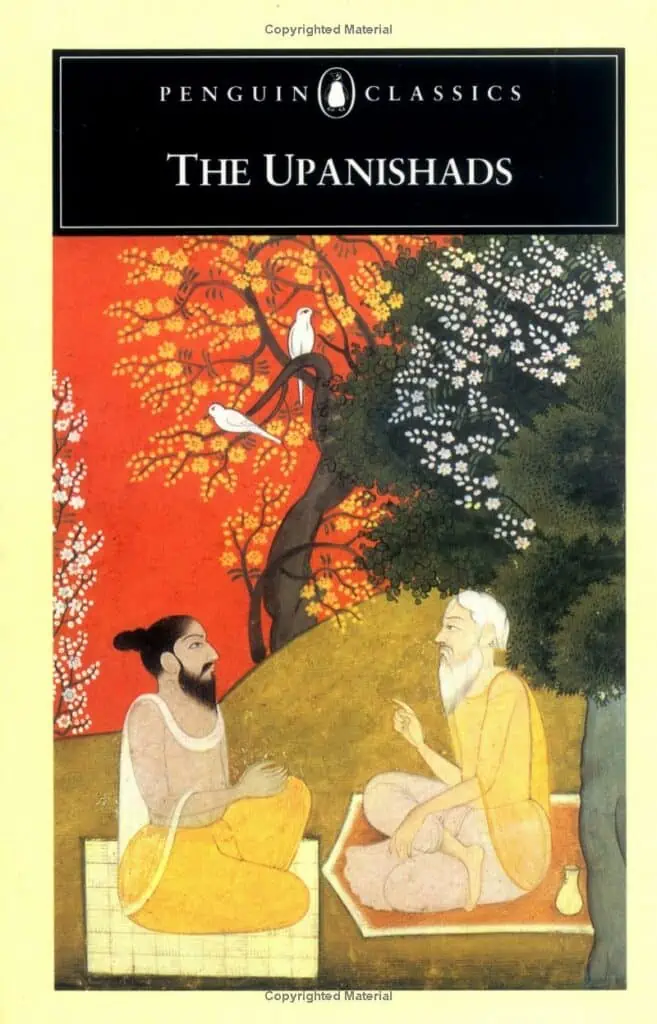Do you suppose you comprehend consciousness, the mundane existence of dwelling, and the idea of life, demise, and the world round us? Suppose once more. Samsara, an age-old philosophical idea, is right here to flip your understanding of existence on its head. This idea, evident in early Upanishads and Jainism, doesn’t simply stay in dusty books or historic scriptures; it’s a common view about Atman and actuality that shapes our existence and performs a pivotal function in Japanese religions and philosophies.
Understanding samsara isn’t nearly mental curiosity. It’s an important step in direction of religious development, providing a contemporary view of your life path. So, neglect what you thought you knew concerning the cycle of life and demise. Immerse your self within the transformative idea of saṃsāra inside Jainism, and let this yoga apply reshape your worldview.
Tracing the Origin of Samsara
To reply the age-old query of what’s samsara requires digging deep into historic occasions, the place you’ll discover ‘samsara’ has roots which might be as previous as filth. This time period first appeared in spiritual texts and scriptures just like the early Upanishads. It describes the cycle of start, demise, and rebirth — the countless cycle of existence.
The Start of Samsara
- ‘Samsara’ means ‘wandering’ or ‘world.’
- It symbolizes the journey by way of earlier lives and existences.
- The origin of Jainism and its traditions could be traced again to among the earliest spiritual texts, introducing the idea of existence.
Over time, this interpretation of “what’s samsara” has morphed and altered, identical to every thing else in life. It’s develop into a cornerstone for a lot of philosophical ideas, too.
Evolution Over Time
- To start with, samsara represented the bodily technique of being born once more.
- Over time, Jainism advanced right into a metaphorical idea about religious development, incorporating traditions, the cycle of saṃsāra, and existence.
- Now, it consists of concepts about karma and liberation.
The affect of saṃsāra in Jainism and its traditions on different spiritual ideas of existence is fairly outstanding. You might say it’s been a game-changer.
Affect on Different Ideas
To have the ability to reply what’s samsara, you have to grasp these associated ideas.
- Saṃsāra in Jainism: Actions, or karma, in a single existence decide destiny in future lives inside our traditions.
- Moksha: Liberation from ache and struggling of the countless cycle of samsara.
- Nirvana: Final enlightenment breaking free from samsara.
So there you will have it – a fast peek into what saṃsāra is all about. From its starting as an historic custom to its evolution over centuries – it’s been fairly a journey! When you’re able to deepen your understanding of this philosophy, contemplate studying the normal texts your self, like this contemporary translation of the early Upanishads.
Overview: What Is Samsara?
The Life-Loss of life-Rebirth Cycle
So, what’s samsara? In a nutshell, saṃsāra is the cycle of life, demise, and rebirth in lots of traditions. Consider it like an countless merry-go-round. You’re born, you reside, you die, after which – whoosh! It’s the cycle of saṃsāra, rooted in traditions. It’s the cycle of saṃsāra, rooted in traditions. It’s the cycle of saṃsāra, rooted in traditions. It’s the cycle of saṃsāra, rooted in traditions. – you’re again once more.
Atman: The Particular person soul
If you go away your bodily physique behind from earlier lives, the atman or “common self” continues wandering by way of this bodily actuality, searching for religious liberation. To launch your highest self — your atman — from the ache and struggling of the world, you have to decide to dwelling a life crammed with as a lot good karma as doable.
Karma’s Affect
However the place does karma slot in? It’s easy: your actions on this life decide your future lives. Good deeds may get you a greater rebirth, whereas dangerous ones might land you in a tough spot.
- Assist an previous girl cross the road? Constructive karma.
- Steal somebody’s lunch? Destructive karma.
Limitless Till Liberation
The factor about this cycle, generally known as saṃsāra in sure traditions, is that it retains spinning till liberation or ‘moksha’ is achieved. This implies breaking free from the wheel of samsara by reaching religious liberation.
Bodily Loss of life vs. Non secular Rebirth
Now, right here’s the place issues get attention-grabbing. Bodily demise doesn’t imply sport over in samsara. As a substitute, it’s extra like leveling up (or down) in saṃsāra, relying in your karma rating and traditions.
To sum up:
- Reside your life.
- Rack up karma factors.
- Die bodily.
- Get spiritually reborn primarily based on these factors.
And repeat till enlightenment breaks the loop!
Simply keep in mind – each motion counts when driving the merry-go-round of samsara!
Function of Samsara in Rebirth Cycle
Samsara and rebirth are two peas in a pod. They’re like PB&J or fish and chips – you hardly ever get one with out the opposite. In samsara, your actions (or karma) are like seeds—plant good seeds to reap good fruits in your subsequent life cycle.
Think about life as an enormous Ferris wheel. You’re on this journey due to your karma. Did you do some good deeds? Within the traditions of saṃsāra, Within the traditions of saṃsāra, Within the traditions of saṃsāra, Within the traditions of saṃsāra, you may simply get bumped as much as a swanky cabin with plush seats subsequent time round. However if you happen to’ve been naughty, let’s simply say the view isn’t so nice from down beneath.
So why would anybody need off this wild journey? Properly, even essentially the most enchanting saṃsāra could make you dizzy, identical to the fanciest Ferris wheel after some time. Many believers search liberation from the cycle of saṃsāra – they’re after moksha or nirvana.
Breaking free isn’t straightforward, although:
- Perceive the character of samsara.
- Acknowledge that our actions affect our place within the saṃsāra, the cycle of rebirth.
- Try to behave righteously to enhance our karmic rating.
- Search religious steerage and enlightenment.
It’s like making an attempt to ace the saṃsāra examination when the syllabus retains altering! However hey, who doesn’t love a problem?
So keep in mind: play good, intention excessive, and possibly, simply possibly, we are able to all discover our manner out of this loopy cycle referred to as samsara.
What Is Samsara in Buddhism?

Buddha’s Teachings on Samsara
Buddha taught that life, or saṃsāra, is marked by struggling, impermanence, and selflessness. These ideas are deeply entwined with saṃsāra—the cycle of start, demise, and rebirth. You may consider saṃsāra like a hamster wheel—always spinning however by no means shifting ahead.
- Struggling (Dukkha): Life is stuffed with ache and dissatisfaction.
- Impermanence (Anicca): All the things adjustments—nothing lasts eternally.
- Selflessness (Anatta): There’s no everlasting self or soul.
Escaping from Samsara
Buddhism affords methods to flee samsara:
- Meditation: A apply that helps us see actuality clearly.
- Mindfulness methods: Assist us navigate saṃsāra, keep current, and keep away from clinging to issues that change.
In response to Buddhism, these practices scale back attachment and want—the basis causes of struggling.
Reaching Nirvana
Nirvana is the final word aim in Buddhism—an finish to the cycles of rebirth inside samsara. It’s like stepping off the hamster wheel into excellent peace and happiness. However getting there isn’t straightforward—it requires deep understanding and apply.
Interpretations Throughout Buddhist Traditions
Totally different Buddhist traditions interpret samsara in another way:
- Theravada: Emphasizes private enlightenment by way of meditation.
- Mahayana: Stresses compassion and serving to others obtain enlightenment.
Regardless of these variations, all types of Buddhism share the frequent aim of escaping the cycle of saṃsāra to attain Nirvana. So whether or not you’re a Theravada or Mahayana follower—or simply somebody interested by what’s saṃsāra—you’re a part of a millennia-old quest for liberation from the cycle of saṃsāra or struggling.
Greedy Samsara’s Which means in Hinduism
Saṃsāra, a Sanskrit time period, is a central idea in Hinduism. Saṃsāra represents the cycle of start, demise, and rebirth that Atman (the soul) undergoes as a consequence of karma.
Karma and Reincarnation
In Hindu beliefs, karma and saṃsāra usually are not simply actions however the consequence of these actions. Accrued over lifetimes, it influences the soul’s reincarnations inside the cycle of saṃsāra. Constructive actions result in favorable rebirths, whereas unfavourable ones end in much less fascinating life kinds or circumstances.
Moksha: The Final Purpose
For Hindus, escaping from the countless cycle of saṃsāra is the final word aim – an achievement generally known as Moksha. Attaining Moksha implies liberation from the cycle of saṃsāra and union with the divine.
Rituals for Lowering Destructive Karma
Hindus have interaction in numerous rituals and practices, navigating by way of saṃsāra, geared toward decreasing unfavourable karma.
- Prayers and meditation
- Fasting on auspicious days
- Pilgrimage to holy locations
- Charitable acts
These actions purify one’s karma, positively influencing future reincarnations.
Numerous Views inside Hinduism
Curiously, views on what’s samsara differ throughout totally different sects inside Hinduism:
- Vaishnavism: Focuses on devotion to Vishnu.
- Shaivism: Facilities across the worship of Shiva.
- Shaktism: Worships Shakti or Devi – the divine female vitality.
Regardless of variations in focus, all sects agree on the elemental idea of saṃsāra and share frequent targets in direction of moksha.
In Jainism – one other historic Indian faith – we discover related ideas of karma and liberation, although their interpretation may differ barely from Hindu beliefs.
To sum up, understanding samsara offers insights into core parts of Hindu philosophy, together with its nuanced views on life cycles and religious liberation.

Wrapping Up Samsara
So, there you will have it! You’ve unlocked the thriller and answered the query: What Is Samsara? It’s not just a few fancy time period tossed round by monks and religious gurus. It’s a deep-rooted idea in Hinduism and Buddhism, shaping their understanding of life, demise, and rebirth.
Realizing about Samsara can provide you a contemporary perspective on life, whether or not you’re into spirituality or simply interested by totally different worldviews. So why not dive deeper? There’s a complete universe of data ready for you! And keep in mind – your journey is what you make it. Maintain exploring!
FAQS
What’s the foremost distinction between Samsara in Hinduism and Buddhism?
In Hinduism, Samsara refers back to the cycle of start, demise, and rebirth ruled by karma. Nonetheless, whereas Samsara additionally represents this cycle, there may be much less emphasis on particular person soul reincarnation as Buddhism doesn’t consider in an everlasting soul.
How can one escape from Samsara?
Hinduism and Buddhism each recommend that liberation from Samsara could be achieved by way of religious enlightenment, referred to as Moksha (in Hinduism) or Nirvana (in Buddhism).
Is Samsara solely current in Japanese religions?
Whereas the time period “Samsara” originates from Japanese religions like Hinduism and Buddhism, related ideas exist in lots of different spiritual traditions reminiscent of Jainism and Sikhism.
Does perception in Samsara affect every day life practices?
Sure certainly! Perception on this cycle typically influences ethical selections and moral conduct since actions (karma) decide future births.
What does understanding the idea of samsara convey to my life?
Understanding samsara offers a philosophical perspective on life’s cyclical nature – start, demise & rebirth – encouraging mindfulness in direction of actions as they influence your karmic steadiness.
What Is Samsara?
Samsara in Hinduism, Buddhism, Jainism, and Sikhism refers back to the cyclical technique of start, demise, and rebirth, with the final word aim being liberation from this cycle. A person’s actions of their present life decide their standing within the subsequent, perpetuating the cycle.


